LEGO 2K Drive is a beautifully presented game, but excessive microtransactions and rubber-banding dampen the experience
- Developer: Visual Concepts
- Publisher: 2K Games
- Release date: 19th May 2023
- Genre: Arcade racing
- Platforms: PlayStation 4/5, Xbox One/Series X|S, Microsoft Windows, Nintendo Switch
- Reviewed on: Windows 11 PC (RTX 4080, i7-13700K, DDR5-5600)
- Game Supplied by: Publisher
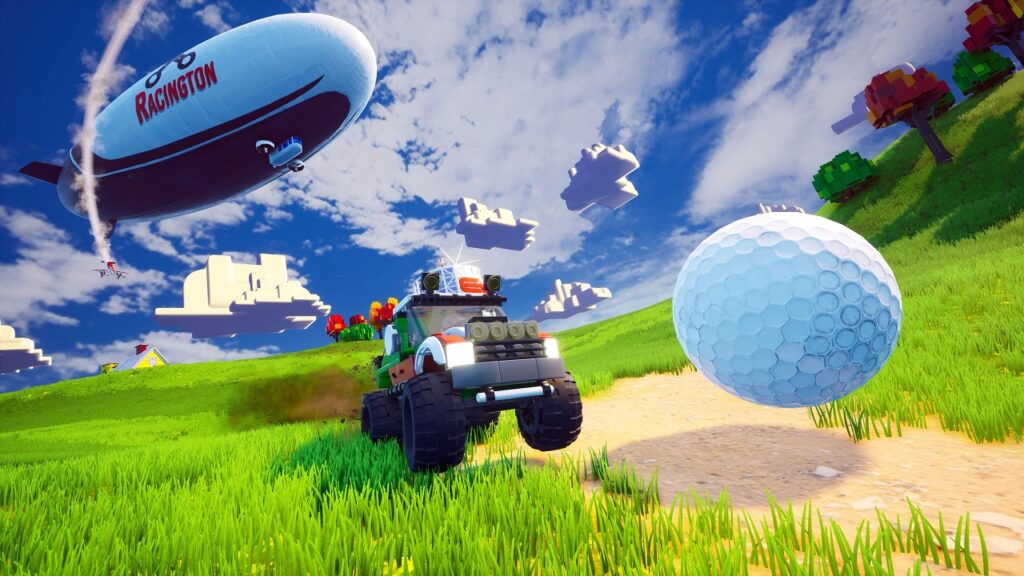
LEGO 2K Drive Review
For us gamers who have younger children, we’re often on the lookout for high-quality games that are age-appropriate, and LEGO games are usually a safe choice. In the last year, we’ve had the outstanding LEGO Star Wars: The Skywalker Saga and LEGO Bricktales, the former being an energetic and engrossing journey through the Star Wars universe, and the latter providing a uniquely soothing and thoughtful experience, encouraging creativity and problem-solving. I’d whole-heartedly recommend either of these games, so what of the newest game to bear the LEGO logo, LEGO 2K Drive?
LEGO 2K Drive is another departure from the LEGO cookie-cutter approach we’ve enjoyed in all of the movie and comic-book tie-ins, with the core gameplay being a curious hybrid between open-world adventuring in the vein of Forza Horizon but with race events that take on a power-up laden approach reminiscent of kart racer games like Mario Kart.
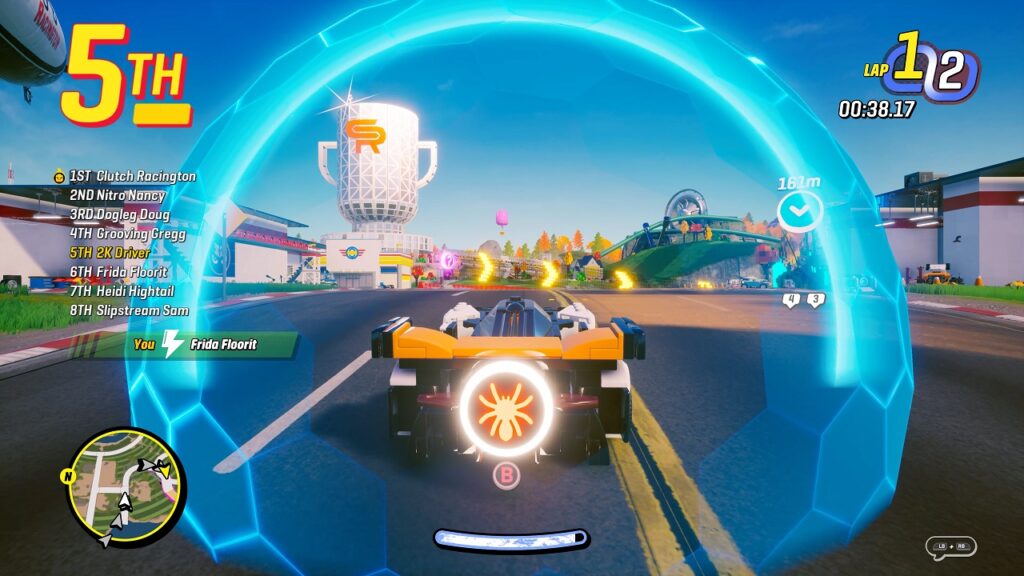
Your adventure spans the world of Bricklandia, featuring four biomes, however, one of them, Turbo Acres, mainly serves as a hub for the tutorial and main GP finale, so realistically there are only three locales where you’ll spend most of your time: the comically named and desert themed Big Butte County; the lush green hills, valleys, beaches and rivers of Prospecto Valley; and the dark and spooky (but not scary for younger kids) Hauntsborough. They are wonderfully realised, with some exciting features to explore, and tonnes of destructible objects and buildings you can smash your way through. Rivers, lakes, mountains and both tarmac and dirt tracks crisscross the game worlds, and you can traverse all of it thanks to the vehicle transformation feature.
The vehicle transformation ability is a huge part of the gameplay, with your car changing to an off-road vehicle or boat depending on the surface you’re navigating. New vehicles are unlocked frequently while racing, ranging from official LEGO City vehicles to licensed vehicles from McLaren, and unique vehicles created specifically for LEGO 2K Drive. You can individually select different vehicles for each terrain and select specific perks, then save them as custom loadouts. As each vehicle has different base stats for acceleration, top speed, agility and durability, you can customise your loadouts for story races and open-world events, but I was a little disappointed that you can’t assign stats to user-created vehicles (they all have base-level stats).

Once you have your loadout ready, it’s time to go racing! Turbo boosts that are built up by smashing through the epically destructible environments, easy-to-learn yet difficult-to-master extreme drifting, a jump button, frequent shortcuts and assignable perks make racing intense and exciting. However, a core feature of LEGO 2K Drive is inverse rubber-banding which prevents you from getting ahead of your opponents until the end of the race. This has been added in lieu of a difficulty setting, and in practice, it works well, as long as your skill level is quite low.
Watching my kids play, there’s a real underdog approach to the gameplay, and I loved their excitement at making a comeback and finishing at the front of the grid no matter how bad their race had gone. The powerups are fun and exciting, though I’d have liked just a little more variety, and they’re powerful enough to turn the tide of a race without being overpowered and ruining the balance. Given that LEGO 2K Drive is aimed at younger gamers (and NPCs frequently refer to your character as “kid”), I can see why they’ve gone down this route and, to a degree, it works.
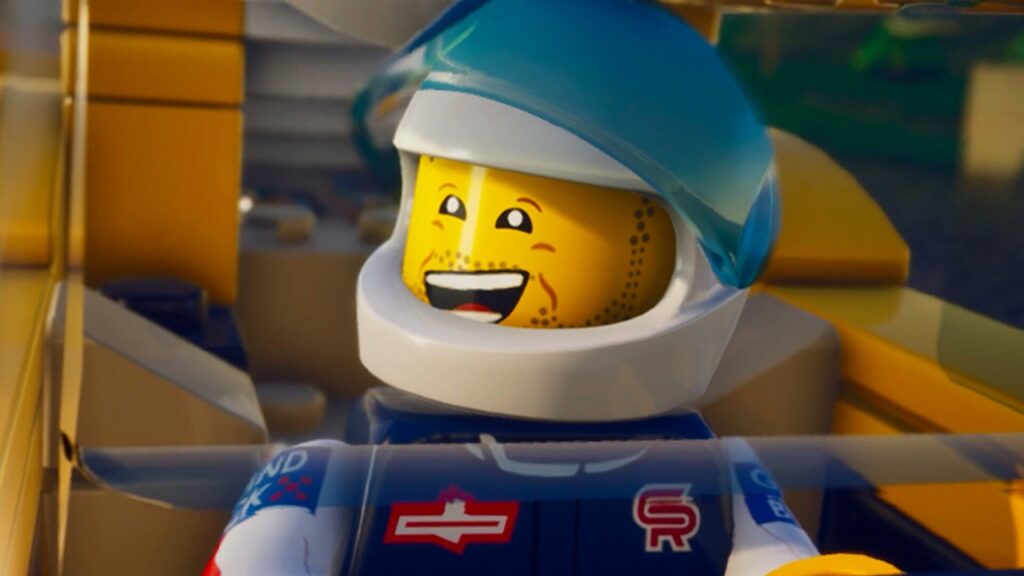
Where it all falls down is when you start to master the game. Once you get to grips with the controls and start nailing fast laps and optimal lines, watching the CPU artificially disappear into the distance feels dirty, and even though it’s carefully measured to allow you to catch up right at the last minute (and often, down to the last second), it renders the rest of the race mostly irrelevant; It’s intense, but only for the closing seconds of each race. What I’d have liked to see is the current adaptive difficulty mode joined by more traditional easy, normal and expert options that eschew rubber banding for a tighter performance delta for more competent gamers.
As proof that 2K could have easily achieved this, many of the open-world time trial and drift events have tightly refined medal requirements, and I found getting the gold medals to be a welcome challenge requiring perfect timing, course memorisation and mastery of the drifting mechanics, as well as levelling up your driver to get the A-level performance benefits. A similar approach to the races would have been most welcome.

Story mode should, in my opinion, make up the bulk of the gameplay, but it’s possible to complete all of the campaign races in under 6 hours. The story itself is typically LEGO, with family-friendly characters offering encouragement as you race through leagues to take on the antagonist, Racer-X, but the writing is more akin to the LEGO City TV shows than any of the franchised games, and well behind the hilarious LEGO City Undercover (although the driver name puns are quite good). It serves to move the narrative along and get you from race to race, I just wish there was more of it – both races and story.
The open-world events make up the vast majority of the content in LEGO 2K Drive – I completed all of the main race events, effectively completing the story mode, and my overall completion was at around 8%. They have so many more circuits that exist as time trials, and I wish some of these were available for story-mode race events, too. Even though some may be shorter than the main race events, they incorporate some exciting track features that would have been great for competitive racing.

There’s no shortage of content outside of the story, but these “On-the-go” events can become repetitive: I loved the time trials, but wish some were available as mini-races, too; there’s an invasion mode that’s essentially a tower-defence mode that I enjoyed, but it becomes a bit samey after a few runs, even in fresh locations. You are also tasked with finding loads of collectables scattered through the maps, some of which require special power-ups you’ll acquire later in the game, and dedicated gamers will no doubt love going around trying to find them and work out how to reach them. So yes, there’s plenty of content, but not all of it is as engaging as it could be and skews too far in favour of open-world exploration as opposed to the more exciting racing.
A very welcome feature that takes full advantage of the LEGO license is the customisation. There’s not as much character customisation as my kids would have liked (they spend hours in other LEGO games creating unique characters), but the vehicle-building toolkit is exemplary. You have a limited amount of bricks to choose from, to begin with, but you’ll soon unlock additional brick packs from completing races and in-game events.
Within your garage, you can work from a blank canvas, building your dream vehicle. You’ll start with a basic chassis, but from here, you can build it out with a vast array of bricks ranging from simple blocks and wedges, right through to more complex LEGO Technic pieces. Positioning the pieces can be a little fiddly at first, and the way the pieces are categorised makes it harder to find the exact piece you want sheerly down to the number of options available, but with a bit of patience, you can make some incredible rides.
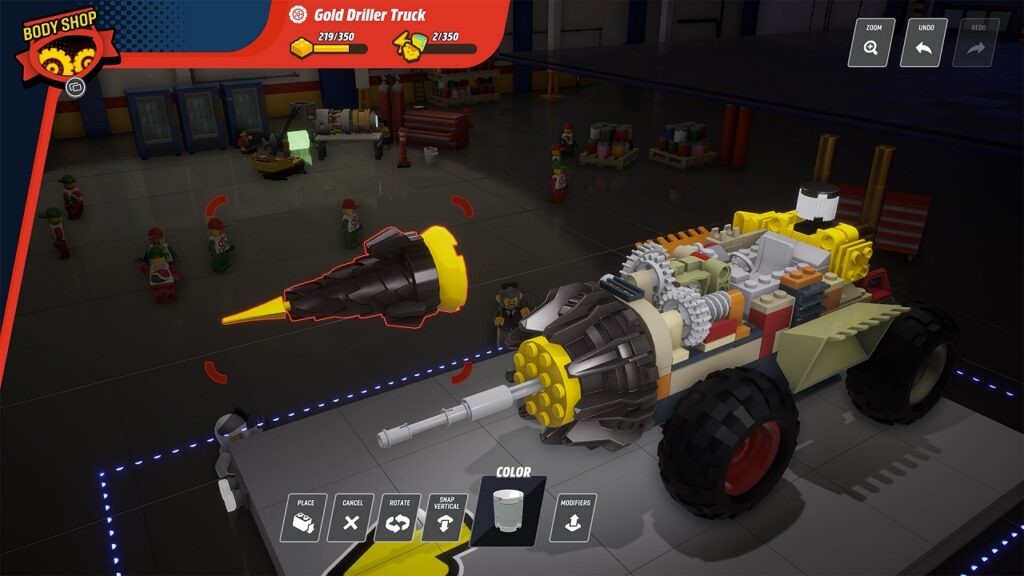
For new builders, or those wanting to replicate the LEGO building experience, there are also guided instructions on how to build the official vehicles you’ve unlocked. Much like a real LEGO set, each stage of the build involves a small selection of bricks to place, and it’s up to you to put them in the correct (highlighted) place. It works very well and even has the option to skip a section if you get stuck.
Much like physical LEGO, though, there’s a lot of fun to be had in modifying builds the way you want, and it’s also possible to take the included vehicles and use them as a blueprint to make your own custom vehicle by adding or removing pieces or recolouring bricks. It’s a fantastic feature that both myself and my kids spent many hours using, and it’s immensely satisfying driving your own LEGO creations around the maps.
Overall, the presentation is faultless. Graphically, the menus and building screens are clear and well-organised, and when in the game world, Bricklandia is bright, colourful and a pleasure to explore. The game runs effortlessly on my rig at 4K, capping at the game’s maximum frame rate of 120 Hz and only utilised about 60% of the performance available – I was running an RTX 4080, so this is to be expected, but this bodes well for those on less performant hardware. The audio is also well-presented, and although none of the music is particularly memorable, it’s also not irritating, providing an entertaining backdrop to the revving engines, screeching tyres and sounds of your wanton destruction as you plough through obstacles in the terrain.
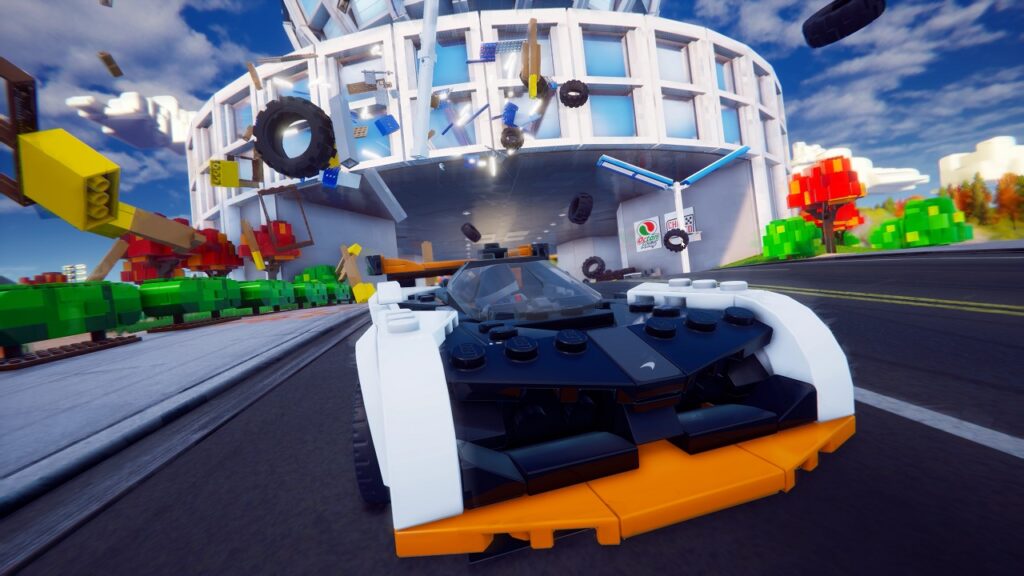
In closing, the last point I’m covering here is also the most contentious. I’m not against micro-transactions, per se, but in LEGO 2K Drive they are offered to you at every opportunity. Vast amounts of vehicles are locked behind a paywall, and although you can earn in-game currency to unlock them, the rate you accrue this currency is glacial. Essentially you’ll have to buy currency to earn the best extras or commit to some insane amounts of grinding that reminds me of the whole Battlefront 2 debacle.
I’m an adult, so I can look past this, but this is a game aimed at kids, which feels egregious. My kids kept getting directed towards new vehicles and brick packs that they couldn’t have, and it soon became apparent that a huge amount of content had been locked out from day one. It was even worse because I felt bad that I had to keep saying no when they asked if we could buy some of the new content. If there were bigger, reasonably priced bundles, I’d maybe have picked one up, but LEGO 2K Drive tries to nickel and dime every single piece of content, a lot of which I would argue should have been included in the base game.
Summary
LEGO 2K Drive is a fun and entertaining racing game for younger players, but more skilled or older gamers may be disappointed. The inverse rubber banding creates close finishes, but it feels cheap and artificial when you hit the skill ceiling. I loved the building elements and they’ve created a decent handling system, so the core gameplay is very good. Racing through the story is great fun and the Mario Kart-Esque powerups make for some exciting events, but there aren’t enough career races; I appreciated the way they’ve integrated them into the open world, with some fun on-the-go events you’ll discover as you travel from event to event, but it may have worked better if LEGO 2K Drive had chosen a singular focus, rather than an open-world/circuit racer hybrid.
That being said, I’m a seasoned gamer – LEGO 2K Drive is squarely aimed at kids, and mine absolutely love it. I’d easily recommend it if you’re a parent choosing a game for your <12-year-olds, but beyond this, competent gamers could become bored by the lack of challenge.
I’d still be interested in revisiting LEGO 2K Drive in the future, and definitely, if they make a sequel, as some parts are excellent – likewise when the first season pass arrives; if it contains a worthy amount of content, I’d consider expanding the game with a purchase. However, the existing microtransactions are far too prominent, and I’d make sure you have robust account controls set up to prevent your kids from inadvertently racking up a huge credit card bill buying DLC.

